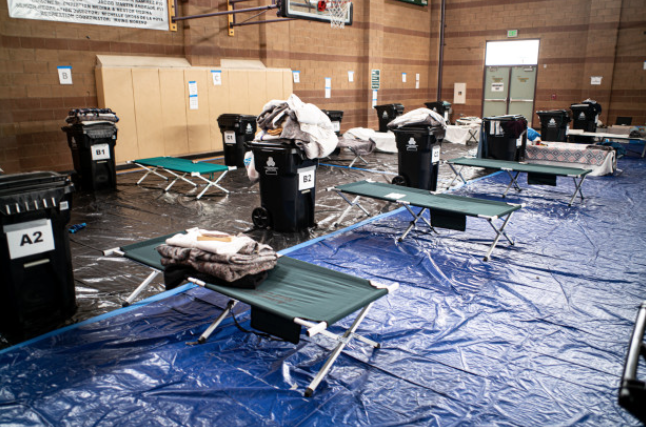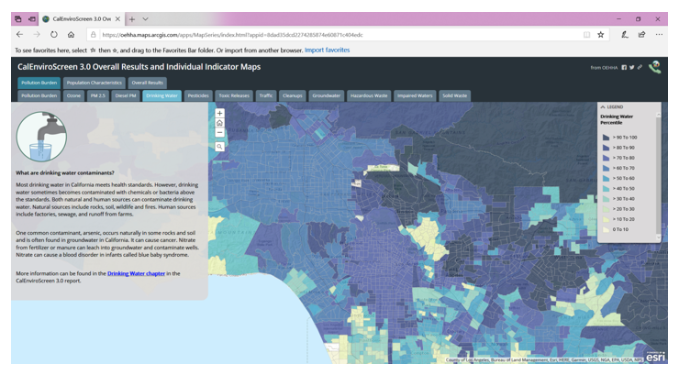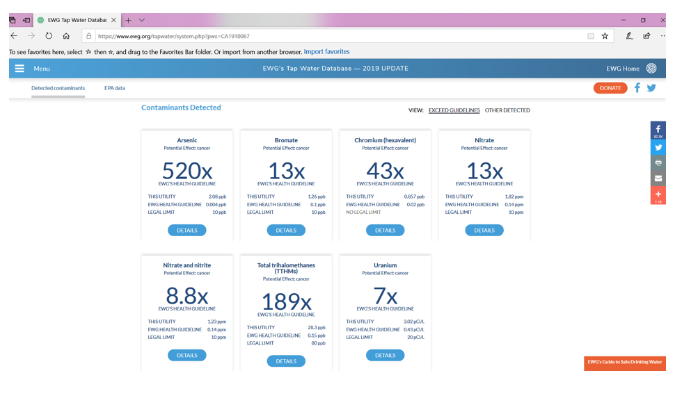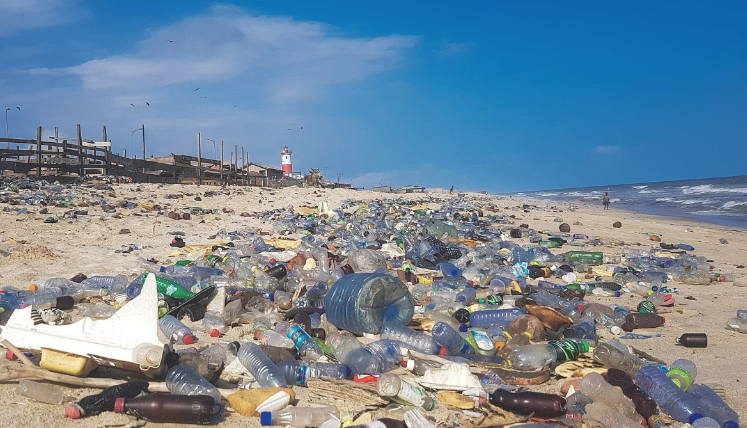CommentsPUBLIC HEALTH-Our planet is out of balance. This year, on April 22, 2020, we celebrate the 50th Anniversary of Earth Day.
The results of the actions of those involved with Earth Day in 1970 and since have resulted in legislation such as the Clean Air Act, the Clean Water Act, and the Endangered Species Act.
I consider myself to be an environmentalist, but sometimes the actions recommended by environmental groups have repercussions that may not have been considered.
According to numerous articles, the City of Los Angeles is trying to move us completely away from single use plastic bottles. While that concept would be in line with trying to prevent the plastic bottle pollution on our beaches and in our rivers, we must also take public health under consideration in this formula. I believe that it would be counterproductive to eliminate single use plastic water bottles before an environmental alternative is found for them which is also safe for human health. Below I will discuss some of the reasons why these single use bottles are currently still important in many situations and why using unfiltered tap water and multiple use bottles may not be safe.
The Coronavirus
The Coronavirus is just one of the illnesses that are transmittable from one person to another. Currently the City of Los Angeles and the County of Los Angeles are moving to relocate our homeless to hotels, recreation centers, etc.
If homeless people are taken off the streets and are living in shelters such as the Woodland Hills Recreation Center on Shoup in Woodland Hills or one in Granada Hills, how are these residents going to have access to clean drinking water without bottled water?

“Cots are spaced at least 6 feet apart at the Granada Hills Recreation Center Wednesday, March 25, 2020. The center has been converted in an emergency homeless shelter with medical personnel during the day, police presence, temperature checks and other features amid the coronavirus pandemic. (Photo by David Crane, Los Angeles Daily News/SCNG)”
Clean drinking water is a basic human need. There is a belief, according to some articles, that people believe the drinking water from the LADWP is “safe.” I would like to put that concept into perspective.
OEHHA - California’s Office of Environmental Health and Hazard Assessment:
As I have mentioned in other articles, OEHHA has a tool called CalEnviroScreen 3.0:
“What Everyone Should Know Before Making a Planning Decision.”
This link to CalEnviroScreen’s website allows you to look at Drinking Water Quality based upon census tracts.

CalEnviroScreen 3.0 Drinking Water map for Los Angeles area
If we plug in the street address for Council President Nury Martinez’s office in Van Nuys, 14410 Sylvan Street, Van Nuys, California, 91401, we get this information on the Drinking water in that census tract:
“Drinking Water Results
“Census Tract 6037128210 has 4,822 people.
This indicator is an index for a select number of contaminants found in drinking water. Average concentrations of contaminants and average violations are ranked by census tract and assigned percentiles. The data is from 2005 to 2013, the most recent complete compliance cycle.
The drinking water contaminant score for this census tract is 618.05, which is the sum of the contaminant and violation percentiles. The drinking water contaminant percentile is 70, meaning it is higher than 70% of the census tracts in California.
The table below shows this census tract’s percentiles for each contaminant and violation:
|
Contaminant or Violation |
Percentile |
|
Arsenic |
77.94 |
|
Cadmium |
0 |
|
Chromium, Hexavalent |
64.86 |
|
Dibromochloropropane (DBCP) |
0 |
|
Lead |
0 |
|
Nitrate (NO3) |
60.66 |
|
Perchlorate |
0 |
|
Total Trihalomethanes (THM) |
96.43 |
|
Trichloroethylene (TCE) |
93.06 |
|
Uranium |
64.01 |
|
Combination |
0 |
|
1,2,3-TrichloroPropane (TCP) |
75.21 |
|
Maximum Contaminant Level (MCL) Violation |
0 |
|
Total Coliform Rule (TCR) Violation |
0 |
This chart shows that the Drinking Water for this census tract – which is all sourced from the LADWP, contains high levels of Arsenic, Hexavalent Chromium, Nitrates, Trihalomethanes, TCE - Trichloroethylene, Uranium, and TCP – TrichloroPropane.
This data says that these numbers are higher than 70 % of the other census tracts in the State.
Then, if we enter Council President Martinez’s office address at City Hall, we see this data:
“Drinking Water Results
Census Tract 6037207400 has 1,363 people.
This indicator is an index for a select number of contaminants found in drinking water. Average concentrations of contaminants and average violations are ranked by census tract and assigned percentiles. The data is from 2005 to 2013, the most recent complete compliance cycle.
The drinking water contaminant score for this census tract is 664.07, which is the sum of the contaminant and violation percentiles. The drinking water contaminant percentile is 79, meaning it is higher than 79% of the census tracts in California.
The table below shows this census tract’s percentiles for each contaminant and violation:
|
Contaminant or Violation |
Percentile |
|
Arsenic |
84.68 |
|
Cadmium |
0 |
|
Chromium, Hexavalent |
74.02 |
|
Dibromochloropropane (DBCP) |
0 |
|
Lead |
0 |
|
Nitrate (NO3) |
71.57 |
|
Perchlorate |
0 |
|
Total Trihalomethanes (THM) |
85.83 |
|
Trichloroethylene (TCE) |
98.66 |
|
Uranium |
74.42 |
|
Combination |
0 |
|
1,2,3-TrichloroPropane (TCP) |
81.45 |
|
Maximum Contaminant Level (MCL) Violation |
0 |
|
Total Coliform Rule (TCR) Violation |
0 |
This census tract has drinking water worse than 79% of the rest of the State’s census tracts. It is high in Arsenic, Hexavalent Chromium, Nitrates, Trihalomethanes, Trichloroethylene, Uranium, and TrichloroPropane.
So is our Drinking Water from the LADWP really safe?
According to the Environmental Working Group (EWG):

“Includes chemicals detected in 2015-2017 for which annual utility averages exceeded an EWG-selected health guideline established by a federal or state public health authority; chemicals detected under the EPA's Unregulated Contaminant Monitoring Rule (UCMR 3) program in 2013 to 2015 (and subsequent testing when available), for which annual utility averages exceeded a health guideline established by a federal or state public health authority; radiological contaminants detected between 2012 and 2017.”
According to this chart, Los Angeles has had drinking water samples that exceeded the following levels: Arsenic by 520 times; Bromates by 13 times; Hexavalent Chromium by 43 times; Nitrates by 13 times; Nitrates and Nitrites by 8.8 times, Total Trihalomethanes by 189 times, and Uranium by 7 times their reporting limits.
We need changes!
-
Have we all forgotten the 1994 Northridge Earthquake?
-
Didn’t we have a “Wake Up Call” after the July 4th, 2019 Ridgecrest earthquake? What were we told to do by our Elected Officials?
The California Earthquake Authority states that there should be one gallon of water per person per day: “How to Make an Earthquake Emergency Kit.”
The CDC states you should store 1 gallon per person per day for at least three days: “Creating & Storing an Emergency Water Supply.”
“Create & Store an Emergency Water Supply
-
Store at least 1 gallon of water per day for each person and each pet. You should consider storing more water than this for hot climates, for pregnant women, and for persons who are sick.
-
Store at least a 3-day supply of water for each person and each pet. Try to store a 2-week supply, if possible.
-
Observe the expiration date for store-bought water. Replace non-store-bought water every 6 months.
-
Store a bottle of unscented liquid household chlorine bleach (label should say it contains between 5-6% of sodium hypochlorite) to disinfect your water, if necessary, and to use for general cleaning and sanitizing.”
So exactly how do we store water for an earthquake if the City of Los Angeles wants to ban disposable water bottles?
The Woolsey and other Fires:
What did Angelenos observe after the Woolsey and Hill Fires?
Angelenos donated food, water, and other supplies not only at Councilmember Bob Blumenfield’s office, but they also donated it to First Responders including the LAFD:
“Can we ask a huge #WoolseyFire favor?
There are rumors that Los Angeles Firefighters are in need of donated food or supplies, such as blankets, wipes, water, energy beverages, snack bars, toothpaste or eyedrops during current wildfires.
Nothing could be further from the truth.
We're honored to be your Fire Department, and plan extensively to support those who proudly protect you, making sure they always have or can easily get all they need to remain battle ready.
You trust the men and women of LAFD to protect you at life's most difficult times. Please also trust us when we say that should we ever have a functional need, we would never hesitate to ask!
While there has been a longstanding organized campaign to fund special hydration backpacks for LAFD crews via the non-profit Los Angeles Fire Department Foundation - - something our recent budget was unable to support, the physical donation of donated goods, including personal care items, food and water on the fireline, at command posts or neighborhood fire stations is thankfully NOT needed or desired at this time!”
So while the LAFD did not need to have donations of bottled water according to this FACEBOOK message, there was a need for supplies like this for people who were in shelters at Pierce College, Taft High School, and Canoga Park High School.
City Properties and Single Use Water Bottles:
When I regularly attended a City Council meeting as a Neighborhood Council member or a LADWP meeting about a decade ago, I took my bottled water from home. If I needed more during a meeting, I knew where the vendors were located that carried bottled water inside City Hall or in the Mall.
City Council members at that time had their own water bottles. They were distributed by and labeled “LADWP.” They were for City family use only – not for those of us who were there for public comment.
By banning bottled water on their properties, are they forcing the public to consume other drinks such as soda or coffee?
The Airports:
Anyone who flies regularly most likely knows that you cannot take water bottles beyond the security gate. But that is just the reason that the City of Los Angeles should be selling bottled water at the shops inside.
“Here's the bottom-line advice from DietDetective.com and the Hunter College NYC Food Policy Center. To be extra safe:
-
NEVER drink any water onboard that isn't in a sealed bottle.
-
Do not drink coffee or tea onboard.
-
Do not wash your hands in the bathroom; bring hand-sanitizer with you instead.”
In Conclusion:
The residents of Los Angeles need to have safe drinking water whether they are working; playing in our parks; traveling by bus, train, plane, or car; taking a trip to their medical provider; preparing for an earthquake, fire, or another disaster.
While reusable bottles may work for some, reusable bottles require considerable water to wash. How many people disinfect their reusable bottles daily?
We need to find balance to protect the people of Los Angeles who are currently in the middle of the Coronavirus with no end in sight. Therefore, single use bottled water should be available to everyone who needs it.
In turn, we need to find ways to have more recycling containers in our parks or near areas where our homeless congregate.
We definitely need to find out if there are alternatives for our current single use water bottles, but we should not be banning their use until an alternative for them is researched.
This is an example of research on that topic:
“Can New Biodegradable Plastic Help Solve the Plastic Pollution Problem?”
WE MUST PROVIDE SINGLE USE WATER BOTTLES TO EVERYONE WHETHER THEY ARE A PART OF OUR CITY FAMILY, OUR COUNTY REPRESENTATIVES, OUR HEALTH CARE WORKERS, OUR FIRST RESPONDERS, OUR GROCERY AND PHARMACY WORKERS, OUR DELIVERY DRIVERS, AND EVERYONE ELSE WHO IS KEEPING US SAFE AT HOME DURING THIS PANDEMIC!
AND WE ESPECIALLY NEED THIS SINGLE USE WATER AVAILABLE TO OUR PATIENTS WHETHER THEY ARE HOSPITALIZED, IN NURSING FACILITIES, SENIOR RETIREMENT FACILITIES, OR ISOLATED AT HOME!
Until we have alternatives to our single use plastic bottles and a better way to recycle them, we need to focus on our public health, and preventing the transmission of the Coronavirus. That includes providing single use bottled water to Angelenos who do not have access to clean drinking water from their taps, and making it available to our hospital personnel, our First Responders, and to our patients whether they are in a hospital, a nursing home setting, or isolated at home.
(Chris Rowe, a former health care employee who has worked at Northridge Hospital, Tarzana Medical Center, and West Hills Hospital has a B.S. in Health Education. She is a 42-year resident of West Hills. She has written for the Los Angeles Daily News, RonKayeLA.org; OurLA.org; and CityWatch. She has a blog on the USC/ Annenberg Center for Health Journalism website and can be reached at [email protected]) Edited for CityWatch by Linda Abrams.
















